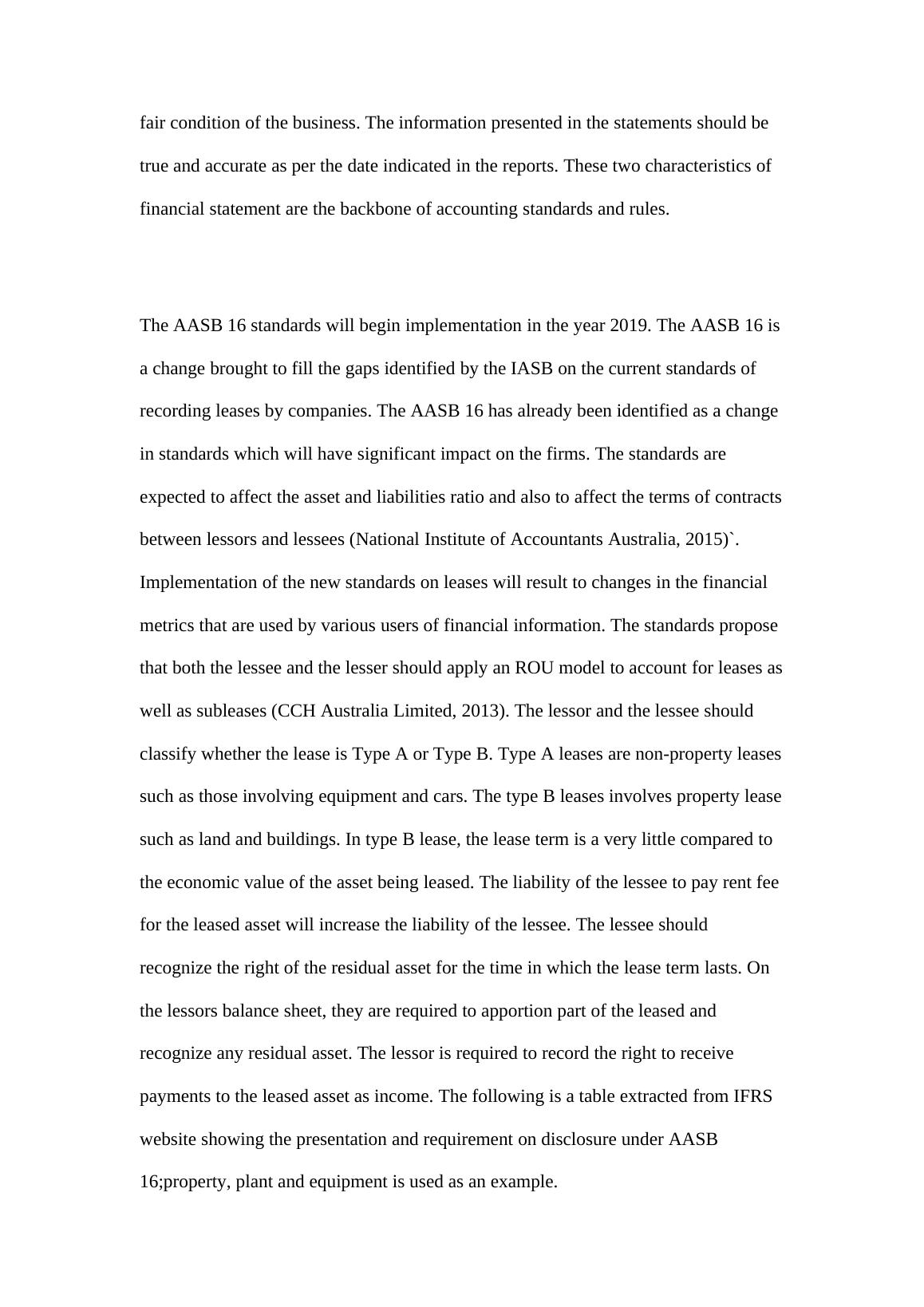AASB 17 on Leasing Firms in Australia
Added on 2020-04-21
11 Pages2364 Words41 Views
Name of student:Registration number:Unit Title:Unit Code:Name of Supervisor:Date due:

IntroductionThis report discusses the impact that the AASB 17 has had on leasing firms in Australia. The report reviews and critically analyzes the article by Churyk, Reinstein and Lander(2015). The fundamental characteristics of financial information include a variety of qualitative aspects that a firm should meet to be considered to have fulfilledthe requirements of AASB. The paper analyzes the impact of the AASB 17 standard on lease on Australian firms. This is because many lease obligations are not recorded on the balance sheet and the current accounting for leases does not adequately represent the economics of lease transactions. The characteristics of financial reporting that the changes on lease standards are based on include; relevance and faithful representation of information (Hancock, Bazley& Robinson, 2015). The paperalso discusses how the application of the new standards on leases is expected to affectlease reporting and business agreement between the lesser and the lessee. The paper also evaluates whether the implementation of the standards complies with the financial reporting characteristics identified above. The two fundamental characteristics of financial statements as stated in the framework are; relevance and faithful representation. The characteristic of relevance states that the information that is generated by an accounting system used by an entityshould impact on decision making by that particular entity (Deegan, 2013). All the information obtained by an accounting system should be useful to the entity for whichthe statements are prepared. It involves both content of the financial information and its timeliness. Faithful representation is a concept that indicates that financial information should be produced in an accurate manner and should represent a true and

fair condition of the business. The information presented in the statements should be true and accurate as per the date indicated in the reports. These two characteristics of financial statement are the backbone of accounting standards and rules.The AASB 16 standards will begin implementation in the year 2019. The AASB 16 isa change brought to fill the gaps identified by the IASB on the current standards of recording leases by companies. The AASB 16 has already been identified as a change in standards which will have significant impact on the firms. The standards are expected to affect the asset and liabilities ratio and also to affect the terms of contractsbetween lessors and lessees (National Institute of Accountants Australia, 2015)`. Implementation of the new standards on leases will result to changes in the financial metrics that are used by various users of financial information. The standards propose that both the lessee and the lesser should apply an ROU model to account for leases aswell as subleases (CCH Australia Limited, 2013). The lessor and the lessee should classify whether the lease is Type A or Type B. Type A leases are non-property leasessuch as those involving equipment and cars. The type B leases involves property leasesuch as land and buildings. In type B lease, the lease term is a very little compared to the economic value of the asset being leased. The liability of the lessee to pay rent fee for the leased asset will increase the liability of the lessee. The lessee should recognize the right of the residual asset for the time in which the lease term lasts. On the lessors balance sheet, they are required to apportion part of the leased and recognize any residual asset. The lessor is required to record the right to receive payments to the leased asset as income. The following is a table extracted from IFRS website showing the presentation and requirement on disclosure under AASB 16;property, plant and equipment is used as an example.

Lease assetsAmount($)Carrying amount of lease assets25,430-Aircraft21,500Real estate and other assets3,971Additions to lease assets5,487 The following is a maturity analysis of lease liability based on gross cash flow that is not discounted:Lease liabilityAmountLess than 1 year4,2382 years3,7863 years3,4604 years3,1665 years2,9406 years2,4537 years2,4018 years2,3849 years2,35910 yrs1,547Between 10-15 years1,965Above 15 years1,409Total undiscounted lease liability32,108 Income statement exampleDepreciation of lease2,674Aircraft2,278Real estate and others396Interest on rent(1,882)

End of preview
Want to access all the pages? Upload your documents or become a member.
Related Documents
ACCT6007 Financial Accounting Theory & Practicelg...
|6
|1982
|75
Accounting Standard and Governancelg...
|18
|3081
|35
AASB 16: Leases - Recognition, Measurement, Presentation and Disclosurelg...
|5
|999
|361
Accounting Standards and Regulations for Leases: AASB 117 and AASB 16lg...
|6
|1700
|108
Financial Accounting | Leasing standard - AASB 117 and AASB 16lg...
|15
|3932
|164
Accounting Theory and Current Issueslg...
|17
|4701
|456
